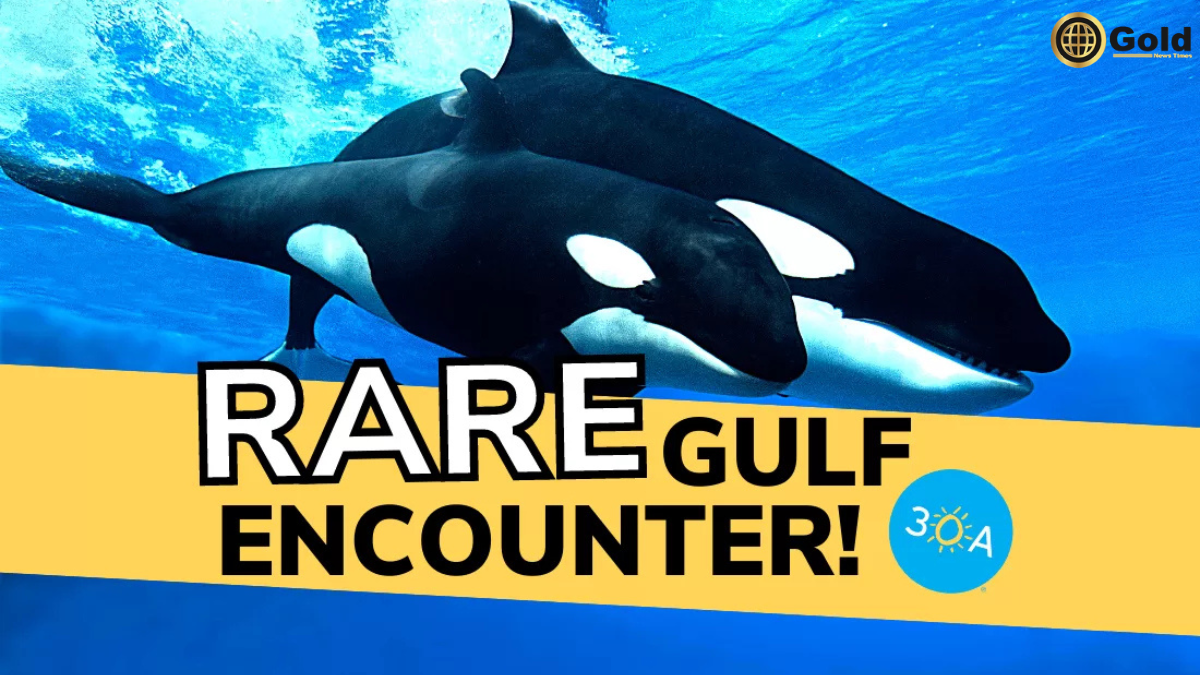Orcas IN Gulf of Mexico: Mysterious Visitors of the Deep

Table of Contents
The Gulf of Mexico is a place of profound beauty and biodiversity, home to a vast array of marine life that attracts scientists, travelers, and nature lovers alike. While the region is often associated with well-known species like dolphins, sea Orcas IN Gulf of Mexico, and various fish, there is a less commonly discussed but fascinating presence in the waters: orcas. These apex predators, also known as killer whales, have been spotted in the Gulf, sparking curiosity and interest in their behavior, migration patterns, and role within this unique ecosystem.
Orcas in the Gulf of Mexico are not a new phenomenon, but they are rarely observed, leading to much speculation about how and why they come to this region. Their appearances seem to be sporadic, and studying them can be challenging due to the unpredictable nature of their movements. This article delves into the mystery of orcas in the Gulf of Mexico, shedding light on their habits, interactions, and the implications of their presence in this delicate marine environment.
The Intrigue of Orcas in the Gulf of Mexico
Orcas, or Orcinus orca, are typically associated with colder, coastal waters in regions like the Pacific Northwest, Alaska, and the North Orcas IN Gulf of Mexico. However, sightings of orcas in the Gulf of Mexico have become more frequent in recent years, though they remain rare compared to other marine mammal species. These encounters have prompted researchers to explore the reasons behind these appearances and what they might signify for both the orcas and the Gulf’s ecosystem.
The Gulf of Mexico is a semi-enclosed body of water surrounded by the United States, Mexico, and Cuba, and it’s home to a wide variety of habitats, from deep ocean waters to coastal marshes. The region’s warm waters are known for being rich in marine life, which could explain why orcas are sometimes drawn to these areas. Though orcas are known for their adaptability, they typically prefer colder waters, so their occasional ventures into the Gulf remain somewhat mysterious.
One theory as to why orcas venture into the Gulf involves their hunting patterns. Orcas are highly skilled predators, with different pods specialized in various types of prey. In colder waters, their diet typically consists of fish, seals, and sometimes even Orcas IN Gulf of Mexico. The Gulf of Mexico’s diverse marine life could provide a rich source of food, particularly fish and other smaller marine animals, which may attract orcas for seasonal hunting.
Another possibility is that the Gulf serves as a temporary haven for orcas during certain stages of their migration. Orcas are known to travel vast distances, and the Gulf of Mexico might offer a respite during their long journeys. The warm waters could be appealing to orcas seeking a break before continuing their migration or heading back to Orcas IN Gulf of Mexico more traditional habitats.
The Behavior and Migration of Orcas
Orcas are highly social and intelligent creatures, with distinct pods that exhibit unique behaviors and hunting strategies. Each pod typically has its own dialect, and their social structure is integral to their survival. When orcas are spotted in the Gulf of Mexico, Orcas IN Gulf of Mexico closely monitor their behavior to understand more about how they interact with this environment and whether they form new social groups while in the region.
While orca pods are known to travel across vast expanses of ocean, some of their movements are influenced by seasonal patterns. Researchers suggest that the Gulf could serve as an important stopover for orcas as they migrate along the Gulf Coast. These migrations are often driven by the availability of food and the need to travel to breeding or feeding grounds. It’s also possible that some orca pods travel through the Gulf during their Orcas IN Gulf of Mexico, simply passing through on their way to other destinations.
It is important to note that orcas are highly adaptable when it comes to the types of prey they hunt. Some orca pods specialize in hunting large marine mammals like seals, while others may focus on fish or even squids. In the Gulf of Mexico, the abundance of fish species and other smaller marine creatures may provide ample opportunities for orcas to find food during their travels.
Interestingly, orcas in the Gulf of Mexico seem to exhibit different behaviors than those in colder regions. In colder waters, orcas are often observed hunting in coordinated groups, working together to catch larger prey. In the Gulf, however, some orca sightings have been reported in isolation or in smaller groups, suggesting that the feeding strategies in the Gulf may differ from those employed in colder, more familiar waters.
The Role of Orcas in the Gulf Ecosystem
The presence of orcas in the Gulf of Orcas IN Gulf of Mexico may have a significant impact on the local marine ecosystem. As apex predators, orcas play a crucial role in maintaining the health of the food chain. Their hunting behavior helps regulate populations of other marine species, preventing overpopulation and ensuring that various species within the ecosystem remain in balance.
In the Gulf, orcas could potentially impact the populations of fish, squid, and other smaller marine life. While orcas are not the only predators in the Gulf, their presence could lead to shifts in the behavior and distribution of prey species. For instance, the hunting patterns of orcas might influence the migration of certain fish species, as these animals adapt to avoid being targeted by the orcas. This dynamic interaction between predator and prey can have ripple effects throughout the ecosystem.
The presence of orcas may also have an impact on other marine mammals in the Gulf. For example, orcas are known to prey on dolphins, particularly smaller or weaker individuals. In some cases, orcas may even compete with other apex predators, such as Orcas IN Gulf of Mexico, for food. This competition can alter the dynamics of the local marine food web, leading to shifts in the population sizes of different species.
Furthermore, orcas are known to communicate with one Orcas IN Gulf of Mexico using a variety of vocalizations, which could also influence the behavior of other marine species in the Gulf. Some scientists speculate that orca calls might serve as a form of communication not only within their pods but also with other marine Orcas IN Gulf of Mexico. For instance, certain fish species may alter their behavior or swimming patterns in response to the sounds made by orcas. Understanding these interactions is still a work in progress, and researchers are keen to explore the full extent of the orcas’ role in shaping the Gulf’s marine Orcas IN Gulf of Mexico.
Conservation Efforts and the Future of Orcas IN Gulf of Mexico
While the sightings of orcas in the Orcas IN Gulf of Mexico of Mexico are intriguing, their presence also raises important questions about conservation and the health of the region’s marine environment. The Gulf of Mexico has faced a range of environmental challenges in recent decades, including oil spills, habitat loss, and overfishing. These issues have placed significant strain on the Gulf’s ecosystems, and it is essential to monitor how orcas and other marine species are affected by these changes.
One of the key aspects of orca conservation in the Gulf is ensuring the protection of their natural habitats. Efforts to reduce pollution, protect breeding grounds, and promote sustainable fishing practices are critical to ensuring that orcas have the resources they need to thrive in this region. Additionally, further research on orca behavior, migration patterns, and interactions with other species can help inform more effective conservation Orcas IN Gulf of Mexico.
Conclusion: The Mystery of Orcas in the Gulf Continues
The presence of orcas in the Gulf of Mexico remains a fascinating and somewhat mysterious phenomenon. These majestic creatures are known for their intelligence, social structure, and adaptability, and their occasional Orcas IN Gulf of Mexico in the Gulf only add to their mystique. While much remains to be discovered about their behavior, migration patterns, and role within the Gulf’s ecosystem, their presence serves as a reminder of the intricate connections between marine life and the environment.
As scientists continue to study orcas in the Gulf, it is hoped that these efforts will yield valuable insights into the dynamics of the region’s marine Orcas IN Gulf of Mexico. With the ongoing challenges facing the Gulf of Mexico, understanding the role of apex predators like orcas is crucial to ensuring the health and sustainability of the entire marine environment. The future of orcas in the Gulf may depend on the collective efforts of researchers, conservationists, and the public to protect this unique and vital ecosystem.





